us toll free: 1-800-948-5563 international: +1 (843) 849-0283 UK: +44 (0) 1334 260018
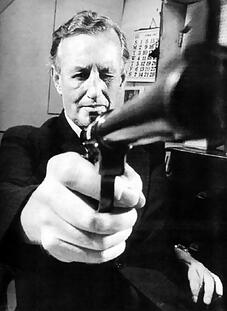
Born in London, Ian Fleming grew up in a privileged family; his father was an MP from 1910 to 1917. His grandfather, Robert Fleming, also founded the Scottis American Investment Trust and the merchant bank Robert Fleming & Co (now part of JP Morgan & Chase).
In 1914, Fleming was sent to Durnford School, a preparatory school in Dorset. Near the school was the estate of the Bond family, whose motto was Orbis Non Sufficit (The world is not enough.) The Bond family could also trace their ancestry back to an Elizabethan spy named John Bond. Here, then, were the roots for Flemings character.
After a brief and unsuccessful stint in the family banking business, Fleming was recruited by Rear Admiral John Godfrey, Director of Naval Intelligence. Fleming soon became Admiral Godfreys liaison among several different government and intelligence organizations, notably the Secret Intelligence Service. The position suited Fleming, and he was promoted to commander by September 1939. Read more.
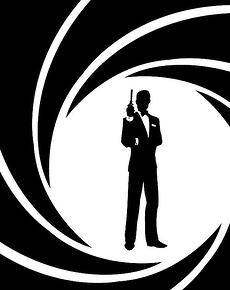
Though the name "James Bond" has become synonymous with adventure and intrigue, Ian Fleming originally intended him to be a rather boring chap. He borrowed the name from another James Bond, an ornithologist who wrote Birds of the West Indies. Fleming had that volume on his shelf at his Jamaica home. He said, "It struck me that this brief, unromantic, Anglo-Saxon and yet very masculine name was just what I needed."
As for the 007 designation, Fleming drew from two places. The first was a reference to British naval intelligence achievement of breaking the German diplomatic code. Most important, perhaps, was decoding the Zimmerman telegram (document 0075), which led to the United States' entering the war. Meanwhile, Elizabethan polymath and spy John Dee would sign his letters to Elizabeth I with "00" and an elongated "7" to indicate that the letters were for the queen's eyes only. Read more.
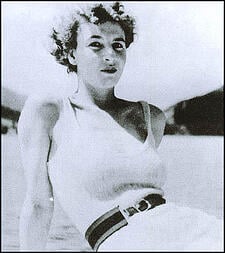
Muriel Wright was born in 1909, to a wealthy family in Ashbourne England. Her father, Henry Fitzherbert Wright, was a cricket player and an active participant in local politics. Although wealthy, conservative women of her time often didn't pursue an education or a career, Wright became quite successful as a model for outdoor recreational clothing.
In August 1935, Wright and Ian Fleming met for the first time in Austria. The two instantly hit it off and embarked on a long-term relationship. Fleming may have been smitten in the early days of their courtship, but it wasn't long before he continued seeing other women. Although there is no evidence that Wright protested these affairs, her family was not pleased with the situation. Her brother, Fitzherbert Wright, was particularly offended by Fleming's behavior, and went so far as to show up at Fleming's home with a horsewhip. Fortunately for Fleming, he and Wright were gone on a weekend trip. Read more.
Jon Gilbert--Ian Fleming, The Bibliography
Jon Gilbert's comprehensive master work of Ian Fleming's Bond novels and other major works. He provides a synopsis of the novel's background, key influences and studies carried out by Fleming. Bibliographical entries follow the textual variations from original manuscript to the first and later editions as well as typos and factual errors, alternative titles, and variant bindings.
Winner of the 16th ILAB Breslauer Prize for Bibliography in 2013.
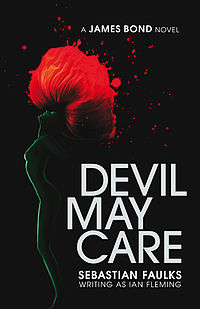
In 2008, at the James Bond centennial, the Ian Fleming estate announced a new series of stand-alone James Bond novels. Each would be penned by a hand selected author. First came Sebastian Faulks, who wrote Devil May Care. Faulks decided to pick up where Fleming had left off with Bond's adventures, placing the world's favorite spy in the summer of 1967. Jeffrey Deaver, however, followed up by placing Bond in the present day in Carte Blanche. Deaver's tale takes Bond from London to Dubai and finally to South Africa.
Like his predecessors, William Boyd incorporated the classic elements of the 007 novel: fast cars, fascinating gadgets, and beautiful women. He maintained that traditional framework in his novel, Solo, but he also made it his own. In an interview with NPR, Boyd said, "I know what the Bond novels deliver, but what's interesting, in a way, is to deliver it--or see it delivered through the filter of my eyes, of William Boyd, rather than Ian Fleming." For example, Boyd plays with the implications that Bond isn't really the quintessential English gentleman everyone imagines: he's actually half Scottish and half Swiss. Read more.
The ILAB Breslauer Prize for Bibliography, given every fourth year to the most outstanding scholarly book about books and worth $10,000, is one of the most prestigious prizes in the field of bibliography. In 2013, the Jury awarded the prize to Jon Gilbert's bibliography of Ian Fleming, calling the book, "An outstanding work of meticulous scholarship, covering every aspect of Fleming's writings, manuscripts, proofs, corrected or uncorrected, first and all later impressions, paperback editions and all subsequent printings and editions. It gives insight into the conception of a book, the editorial process, in short, Jon Gilbert's work covers all that possibly is to know, all one can possibly know, about Fleming and his writings. And it not only shows that modern authors are collectible, but also that modern authors merit exhaustive bibliographical scholarship." Read more.
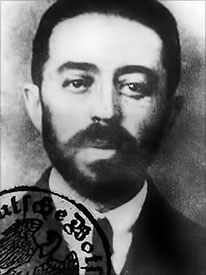
Though Ian Fleming certainly drew from his own experiences to create James Bond, he also had another inspiration: Sidney Reilly. The Russian-born spy proved an indomitable agent whose charismatic personality, fearless execution, and hedonistic lifestyle are reflected in Fleming's 007.
The precise details of Reilly's birth are unknown; a pathological liar, Reilly could hardly trusted to give an accurate account of his own life. Moreover, the British government likely altered the facts to protect Reilly's identity. But the majority of official documents list Reilly's birthdate as March 24, 1874 in Odessa, Ukraine. His given name was Sigmund Georgievich Rosenblum. His father, Grigory, was a wealthy Jewish contractor, while his mother, Paulina, was an accomplished pianist.
Reilly would later claim that he was forced to flee Russia because he was involved in a political plot. Read more.
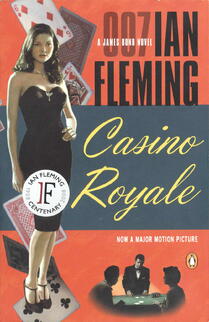
Ian Fleming began writing Casino Royale on February 17, 1952. He set out to write to distract himself from his upcoming wedding to pregnant girlfriend Ann Charteris. When Fleming finished the novel on March 18, 1952, he called it a "dreadful oafish opus." He showed it to ex-girlfriend Clare Blanchard, who advised him not to publish it at all--or to at least publish under a different title.
But Fleming moved forward with publication, and the first edition was released on April 13, 1953. Fewer than 4,300 copies were printed. The book received positive reviews from the critics and quickly sold out in the UK. Sales in the US were slower, though subsequent James Bond novels were successful on both fronts. Casino Royale has been adapted for the screen three times since its publication. In 1954, it was the basis for an episode of the CBS television series Climax!, with Barry Nelson as CIA agent "Jimmy Bond." Read more.
While many authors admit to using real-life people as inspiration for their fictional creations, Ian Fleming, the author the James Bond series, did so in a not-so-subtle fashion. Scaramanga isn't a very common name, but it does not exclusively appear in the pages of The Man with the Golden Gun. In this James Bond novel, the primary antagonist is Francisco “Pistols” Scaramanga, a character that likely borrowed his legendary surname from George Ambrose Scaramanga, a peer of Fleming’s at Elton College.
What’s unclear is Fleming’s motivation for using this name in his writing. According to the real Scaramanga's grandson, the George Ambrose Scaramanga never had a villainous reputation. He was mild-mannered, soft-spoken, and serious about his studies. His grandson further speculates that, if a rivalry did exist between the two men, it was because Fleming was a known troublemaker at school who may have resented those who were more inclined to respect the rules. Read more.
Casino Royale |
Diamonds Are Forever |
For Your Eyes Only |
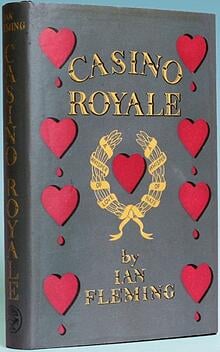 |
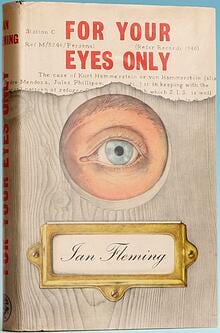 |
|
| Ian Fleming's legendary first James Bond novel, released on 13th April, 1953. Featuring Monsieur Le Chiffre, the treasurer of a Soviet-backed trade union in the Alsace-Lorraine region of France, who runs a high-stakes baccarat game in order to recover union money he lost in a failed chain of brothels. Basis for the 21st Bond movie with Daniel Craig and Eva Green as Bond Girl Vesper Lynd. | In the fourth novel of Ian Fleming's James Bond series, Agent 007 infiltrates the highly expensive world of diamond smugglers. Posing as a petty diamond thief, Bond meets beautiful Tiffany Case and gets inside information on how diamonds are traveling from Africa to Nevada. The seventh film in the EON Productions film franchise and the last to star Sean Connery as James Bond. |
Ian Fleming's first book of short stories narrating five incidents in the life of James Bond. This volume contains, "From a View to a Kill," "For Your Eyes Only," "Quantum of Solace," "Risico," and "The Hildebrand Rarity." "Quantum of Solace" is the basis for the second James Bond movie starring Dennis Craig. |
The Spy Who Loved Me |
Goldfinger |
Moonraker |
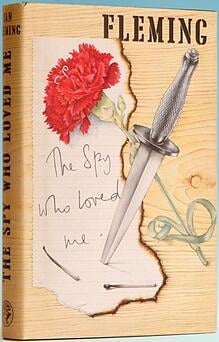 |
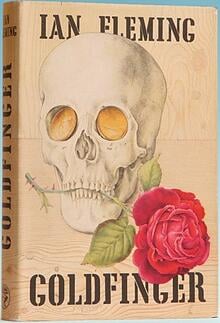 |
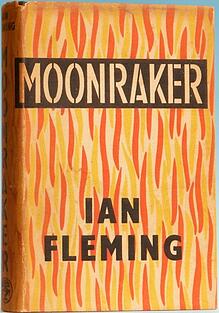 |
|
The central character and narrator of this book is "Vivienne Michel," a young Canadian woman who runs a cheap motel in the Adirondack Mountains. When first published, this book was banned in some countries for being too sexually explicit. The basis for the third Roger Moore James Bond film, Barbara Bach played Major Anya Amasova (Agent Triple X). |
In Ian Fleming's seventh James Bond novel, Junius Du Pont (introduced in Casino Royale) suspects Goldfinger of cheating and offers to pay British Secret Agent 007 to confirm his suspicions. The basis for the Academy Award winning movie starring Sean Connery, Gert Fröbe as Auric Goldfinger, and Honor Blackman as Pussy Galore. | The third entry into the James Bond literary series. Hugo Drax, a leading member of British society, is not what he seems nor is his weapon really being built to protect the homeland. M is convinced the industrialist is cheating at cards, but there is much more at stake. The basis for the Roger Moore film, co-starring Lois Chiles. |